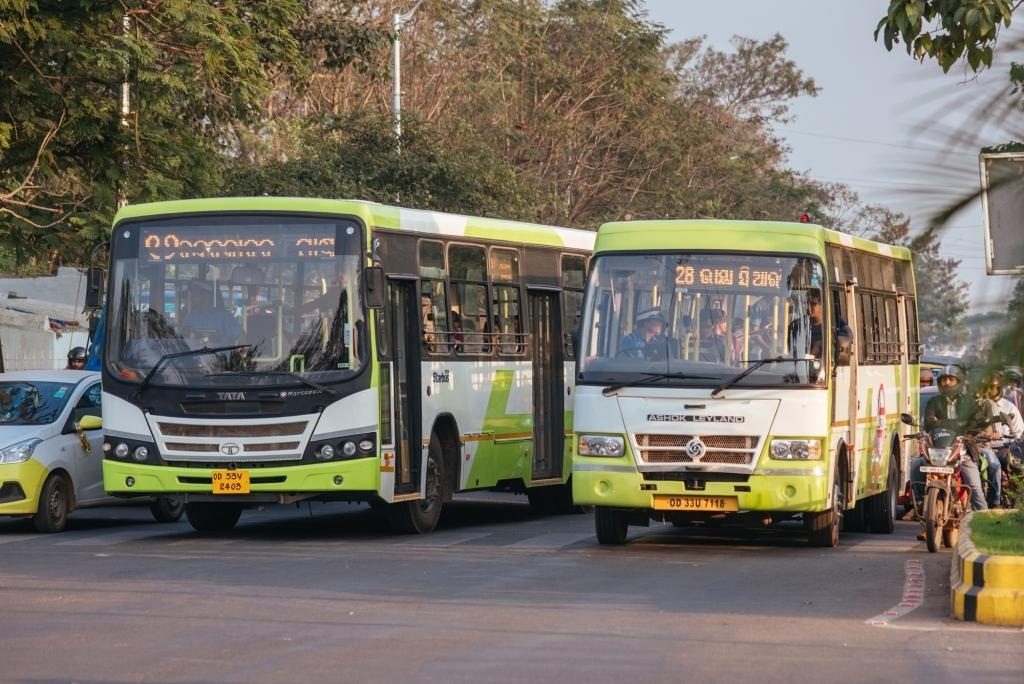Mo Bus was recently adjudged the ‘Best City Bus Service Project’ in the country. However, in Bhubaneswar, Mo Bus still struggles to attract commuters in comparison to individual vehicles and app-based cab services. Aviral Mishra of Orissa POST delves deep into the issue.
“If you have just missed a bus it will take 12-15 minutes for another to arrive. In today’s hectic lifestyle, who has so much time to waste?” complains Sanjib Mallick, a regular commuter from SUM Hospital to Master Canteen square, possibly summing the state of public transport in the Capital city.
Mo Bus, the city’s only public transport, possibly has everything. Cheap fares (ranging from `8 for AC buses and `5 for non-AC ones), WiFi, online ticketing and even discounts on e-payments. Despite this, the city buses have few takers. It is still struggling to compete with other modes of transport.
Commuters who use public transport seem to prefer the costlier and jam-packed auto-rickshaws over Mo Buses. Others who prioritise comfort have developed liking to the newly introduced app-based cab services such as Ola and Uber. These result in empty seats in Mo Buses even during rush hours with only 7-10 passengers reported in certain routes.
“Patience is thin with urban people when it comes to city transport. For instance, travelling from Master Canteen to KIIT Square on Mo Bus could take up an hour. On the other hand, the same distance can be covered in half the time or less in an auto. Moreover, Mo Buses have only 6 per cent participation of total trips in the city which ideally should be 20-25 per cent,” explained Debaranjan Mohapatra, an urban transport specialist.
Moreover, round-the-clock availability and wider accessibility of autos makes it the more preferred choice over Mo Buses’ services.
However, not all Mo Buses are sparsely populated. With about 200 buses in its fleet and about 1800 trips made everyday, sources say that Master Canteen to Nandankanan is the busiest and most profitable route. Similarly, routes that connect the fringes of the city like Jatni and Bharatpur, or nearby cities like Puri and Cuttack— which are not serviced by auto-rickshaws— do run almost full.
Challenges aplenty for Mo Buses
With more than 200 buses operating in 20 routes and with an average ridership of about 80,000 the Mo Bus is gradually becoming popular among citizens. However, from short-ticketing to lack of wider accessibility, challenges are aplenty for the public transport.
“Mo Bus service is still at a very nascent stage. As compared to public transports in other cities, we have just taken baby steps. To prevent short ticketing, which is a major revenue loss, we have recently started imposing fines on ticket-less passengers. Besides, we are in talks with the authorities for greater accessibility inside the BPIA to ferry more passengers,” explained Dipti Mohapatra, CRUT General Manager.
The Biju Patnaik International Airport (BPIA), which remains the most lucrative route for all transport organizations, has granted different level of access to all of them. The Mo Bus service from BPIA to Cuttack route, which is in heavy demand, has only been given Lane IV amongst the four lanes at the airport. Whereas, Lane I access has been given to app-based taxi services such as Ola and Uber which is right at the entry and exit point at the BPIA.
Responding to this, BPIA director said, “Giving access to heavy vehicles at Lane I in BPIA can cause major congestions which is a huge security concern. Besides, one has to walk only some distance to get to the Mo Bus. However, given the general mindset people prefer shelling out a bit more money and booking a cab which is more comfortable for them.”
Mo Taxis soon
To develop the culture of usage of public transport, CRUT (Centre for Rural Urban Transport) has planned to introduce Mo Taxis soon which will give door-to-door service to the riders of the Capital city.
“We are in talks with the authorities to implement Mo Taxis which will further enhance public transport where the rider can merely step out of his home and reach his destination without using any other modes of transport.
Besides, it will create more employment opportunities for taxi drivers in the city,” stated Dipti Mohapatra, CRUT General Manager.
